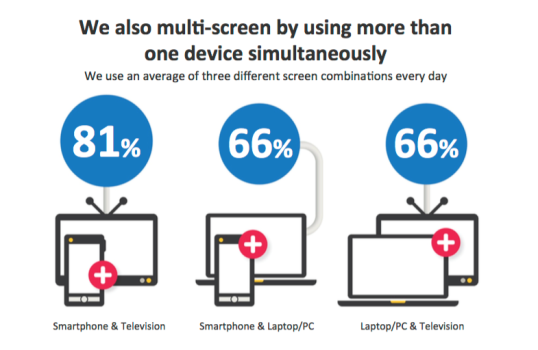Animals are all around us. From the annoying little ants you find in the pantry, to the massive spider that scares you while it’s chilling in the corner of the room, to the playful little puppy that runs up to you when you walk in the door. Even humans are animals, even though we don’t think of ourselves as them. But for us to make sense of the marvellous creatures that grace our planet, we find humanisms inside them. “Animals are imbued with humanlike intentions, motivations, and goals” (Epley, Waytz & Cacioppo 2007, pg. 864). This concept is called anthropormophism. But this has conjured the idea that animals are able to do what humans can, and can be treated inhumanely in order to do so.
As far back as I can remember, I loved everything about animals. My favourite movie, Homeward Bound II: Lost In San Francisco, was about 2 dogs and a cat that got lost on a family holiday and they had to find their way home. They were given voices and were given human experiences to attract the viewers attention easily. It worked on me, watching it over and over again until even today I can nearly recite the whole movie. But it just shows that by creating an animal with human characteristics, it provokes emotion and further engages the viewers attention.
For some animals, making a movie is not as pleasant and they are treated cruelly. The video below shows the filming of A Dog’s Purpose, where a dog (Hercules) is being forced into rushing water, obviously in distress.
The way Hercules is being treated for the purpose of making a film is despicable. Harming any animal in an attempt to create entertainment for others is a deplorable act. While it is confirmed that the dog is fine, it does not excuse the distress that he was obviously in and the continuous attempts to put him in the water didn’t help the situation either. Any one of the people present could have done something to stop this. The person filming the video stating that “he isn’t going to calm down until he goes in the water” is just mind blowing. This man can’t possibly know what the dog is thinking. Then he continues to say “look he wants to go in”. I have watched this video several times and I fail to see any indication whatsoever that Hercules wants to go in the water. The end of the video shows the same scene, in a different location with a dog actually in the water. While it is hard to see, the dog disappears under the water and people rush to his aid and the director calls cut. The fact that this dog was put in the position where he disappeared under the water is disturbing. The water was obviously too strong for the dog to be able to swim and while I am not a set design expert, I don’t see why the water could not have been shallow enough for the dog to touch the bottom of the pool.
This isn’t just a single occurrence. Animal cruelty while film making is a very important in todays industry due to the amount of media scrutiny. But while the American Humane Society ensures animals are treated kindly on set, there appears to be a real problem with the way animals are treated off set. Animals are often kept in small cages, are punished by their trainers if they don’t perform correctly and living spaces are not kept clean. The trainers who look after these animals should know better, but for some absurd reason, they continue to treat animals cruelly for no benefit at all.

Trainer whipping the tiger from ‘Life of Pi’ – Source
Animals are a massive part of our lives. They can share your life with and be your best friend, helping hand and constant companion. But the way they are treated by some, places a somber thought among those who love animals so much. The pain they feel is felt by so many others that strive to do something about it. All animals should be able live a life where they are not in fear of what humans might make them do and live a wonderfully happy life. Just like this quokka, who is the happiest animal in the world.
Bibliography
Epley, N, Waytz, A & Cacioppo, JT 2007, ‘On Seeing Human: A Three-Factor Theory of Anthropomorphism’, Psychological Review, vol. 114, no. 4, pp. 864-886
IMDb 1996, Homeward Bound II: Lost in San Francisco, IMDb, viewed 30 March 2017, http://www.imdb.com/title/tt0116552/
IMDb 2017, A Dog’s Purpose, IMDb, viewed 30 March 2017, http://www.imdb.com/title/tt1753383/
Grenoble, R 2013, ‘Meet The Quokka, The Happiest Animal in the World’, Huffington Post, 8 January, viewed 30 March 2017, http://www.huffingtonpost.com.au/entry/quokka-happiest-animal-in-world_n_2426133
Highball, S 2013, I’m Still Not Over… Shadow’s almost-death in ‘Homeward Bound’, Entertainment, weblog post, 7 October, viewed 30 March 2017, http://ew.com/article/2013/10/07/im-still-not-over-shadow-homeward-bound-the-incredible-journey/
Newark, I 2017, ”A Dog’s Purpose’ just the latest instance of animal abuse in film’, Daily News Opinion, 21 January, viewed 30 March 2017,http://www.nydailynews.com/opinion/dog-purpose-latest-instance-animal-abuse-film-article-1.2952314
TMZ 2017, ‘A Dog’s Purpose’ Producers German Shepherd is Fine, Wasn’t Forced to Film, TMZ, viewed 30 March 2017, http://www.tmz.com/2017/01/18/a-dogs-purpose-german-shepherd-is-okay-not-forced-to-film/
















